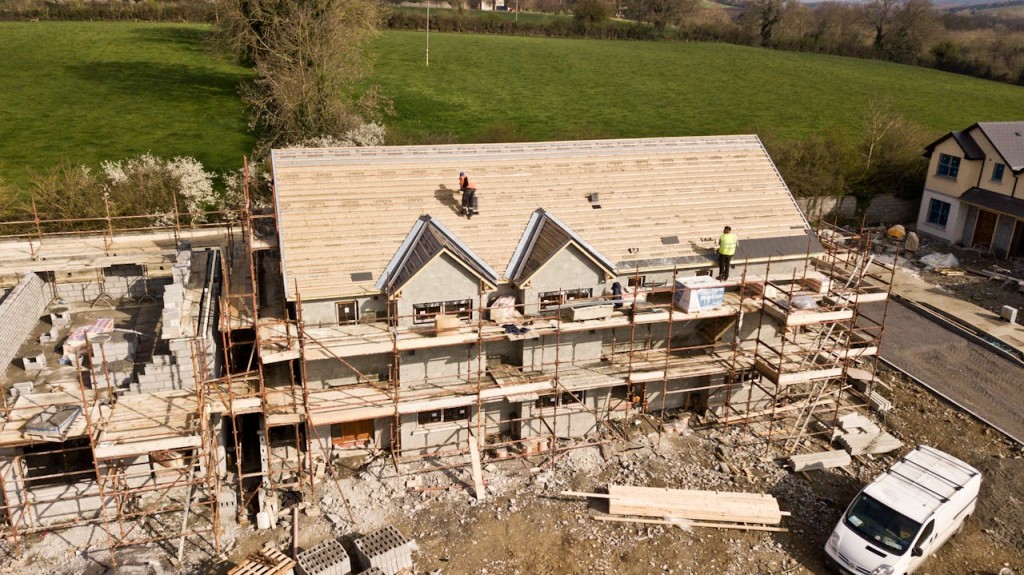In the era where innovation continuously reshapes industries, the construction sector stands at the precipice of a technological revolution. Among the myriad of advancements, one tool has taken flight, quite literally, transforming the landscape of construction operations – drones.
Once confined to military applications, drones, or unmanned aerial vehicles (UAVs), have rapidly infiltrated civilian spheres, notably in construction. Their adoption has ushered in a new era of efficiency, safety, and precision in an industry long characterized by labor-intensive processes and risk-laden environments.
Aerial Insights: Enhancing Project Management
At the heart of drone technology’s integration into construction lies its unparalleled capacity to provide aerial insights. Equipped with high-definition cameras and sensors, drones offer project managers and site supervisors an expansive view of construction sites, facilitating comprehensive monitoring and analysis.
From initial site surveys to ongoing progress tracking, drones enable stakeholders to gain real-time, bird’s-eye perspectives, transcending the limitations of ground-level observations. This aerial data empowers informed decision-making, optimizing resource allocation, scheduling, and workflow management.
Precision Mapping: Streamlining Surveying
Traditionally, land surveying has been a laborious and time-consuming endeavor, fraught with challenges such as accessibility constraints and inaccuracies. However, drones have emerged as a game-changer in this domain, revolutionizing the surveying process with their ability to capture detailed topographic data swiftly and accurately.
By autonomously navigating construction sites and capturing high-resolution imagery, drones facilitate the creation of precise 3D maps and models. These digital representations not only streamline the surveying process but also serve as invaluable assets for design, planning, and analysis, fostering enhanced collaboration among project stakeholders.
Safety First: Mitigating Risks
Safety remains paramount in the construction industry, where hazardous conditions and accidents pose persistent threats. Here, drones emerge as potent allies, offering a means to mitigate risks and enhance on-site safety protocols.
By assuming the role of aerial inspectors, drones can conduct routine site inspections without exposing personnel to potential hazards. Equipped with thermal imaging and other sensors, they can identify structural defects, monitor equipment integrity, and detect safety violations, all while minimizing human intervention.
Beyond Boundaries: Monitoring Progress
The dynamic nature of construction projects demands continuous monitoring of progress and adherence to timelines. Drones excel in this regard, providing unparalleled capabilities for real-time progress tracking and performance evaluation.
By capturing aerial imagery and videos at regular intervals, drones enable stakeholders to assess construction milestones, identify bottlenecks, and anticipate potential delays. This proactive approach empowers project teams to implement timely interventions, optimize resource utilization, and uphold project timelines with greater precision.
Future Horizons: Expanding Possibilities
As drone technology continues to evolve, its potential to revolutionize construction extends far beyond current applications. From automated material delivery to aerial construction techniques, the future promises a plethora of innovative solutions fueled by drones and their symbiotic integration with emerging technologies like artificial intelligence and robotics.
Moreover, regulatory frameworks governing drone operations are evolving to accommodate their widespread adoption in construction and other industries. As airspace regulations become more streamlined and standardized, the barriers to drone deployment are expected to diminish, unlocking even greater opportunities for innovation and efficiency.

In conclusion, the integration of drone technology into construction represents a paradigm shift, redefining the possibilities and potentials of the industry. By harnessing the power of aerial insights, precision mapping, safety enhancements, and progress monitoring, drones are propelling construction into a new era of productivity, sustainability, and safety. As stakeholders embrace this transformative technology, the sky is no longer the limit – it’s just the beginning.






Thank you for this insightful article. The comprehensive analysis provided underscores the immense potential drones hold in streamlining operations, enhancing safety measures, and revolutionizing project management. Your meticulous examination of various applications, from site surveying to progress monitoring, offers a compelling narrative on how embracing innovation can propel the construction sector forward. As stakeholders increasingly recognize the value of integrating drones into their workflows, your article serves as a timely and invaluable resource, shedding light on the burgeoning advancements reshaping the future of construction. Well done!
The potential for drones to enhance project management, streamline surveying, and improve safety protocols is compelling. I am particularly interested in the real-time monitoring capabilities and the ability to create precise 3D maps. This technology could significantly optimize our operations and resource allocation. I look forward to taking steps to incorporate drones into our workflow and witnessing firsthand the transformative impact they promise.
Thank you for shedding light on this innovative advancement!
Thank you for sharing this information in your article!